Last Updated on August 3, 2024
Introduction to Buying Used Tires
The market for used tires presents a unique opportunity for both cost-conscious and environmentally aware consumers. However, with options come risks, especially when safety is the utmost priority. This introduction delves into the nuanced world of used tires, exploring the market dynamics, the reasons behind their popularity, and the guide’s intentions to assist potential buyers in making informed decisions.
Overview of the Pre-owned Tire Market
The pre-owned tire market is a substantial subset of the automotive industry. It is fueled by various factors, including economic considerations, environmental concerns, and the sheer volume of vehicles that reach the end of their lifecycle each year. Globally, the tire market is extensive, with the United States alone seeing nearly 300 million tires discarded annually, as the U.S. Tire Manufacturers Association reported. Many of these tires find their way into the used tire market.
Pre-owned tires come from various sources:
- Vehicles that have been scrapped or salvaged.
- Car owners who upgrade to a new set before the old ones are worn out.
- Overstock from tire dealers or warehouses.
- Rental car companies rotate their inventory.
The market for used tires is structured across various retailers, from small, independent local dealers to large-scale online platforms. Each outlet provides varying levels of product history transparency and quality assurance.
The Appeal of Used Tires
The appeal of used tires can be attributed to several factors:
- Cost Efficiency: The price is the most compelling reason for purchasing used tires. They are significantly cheaper than new ones, sometimes costing less than half the price of their brand-new counterparts.
- Environmental Responsibility: Purchasing used tires contributes to environmental sustainability. It reduces waste by giving an extended life to tires that might otherwise end up in landfills.
- Short-Term Solutions: For leaseholders nearing the end of their contracts or car owners preparing to sell their vehicles, investing in used tires can be a cost-effective short-term solution.
- Specialty Tires: Those needing tires for occasional use, such as off-road or winter conditions, may find that used tires offer a practical alternative to new, expensive specialty tires.
- Quality Brands: Used tire markets often have inventory from high-quality brands, allowing buyers to purchase premium brands at lower costs.
The ultimate goal of this guide is not to advocate for or against the purchase of used tires but instead to offer a toolset for evaluating the practicality and safety of such a purchase. It empowers consumers to navigate the pre-owned tire market with greater confidence and knowledge.
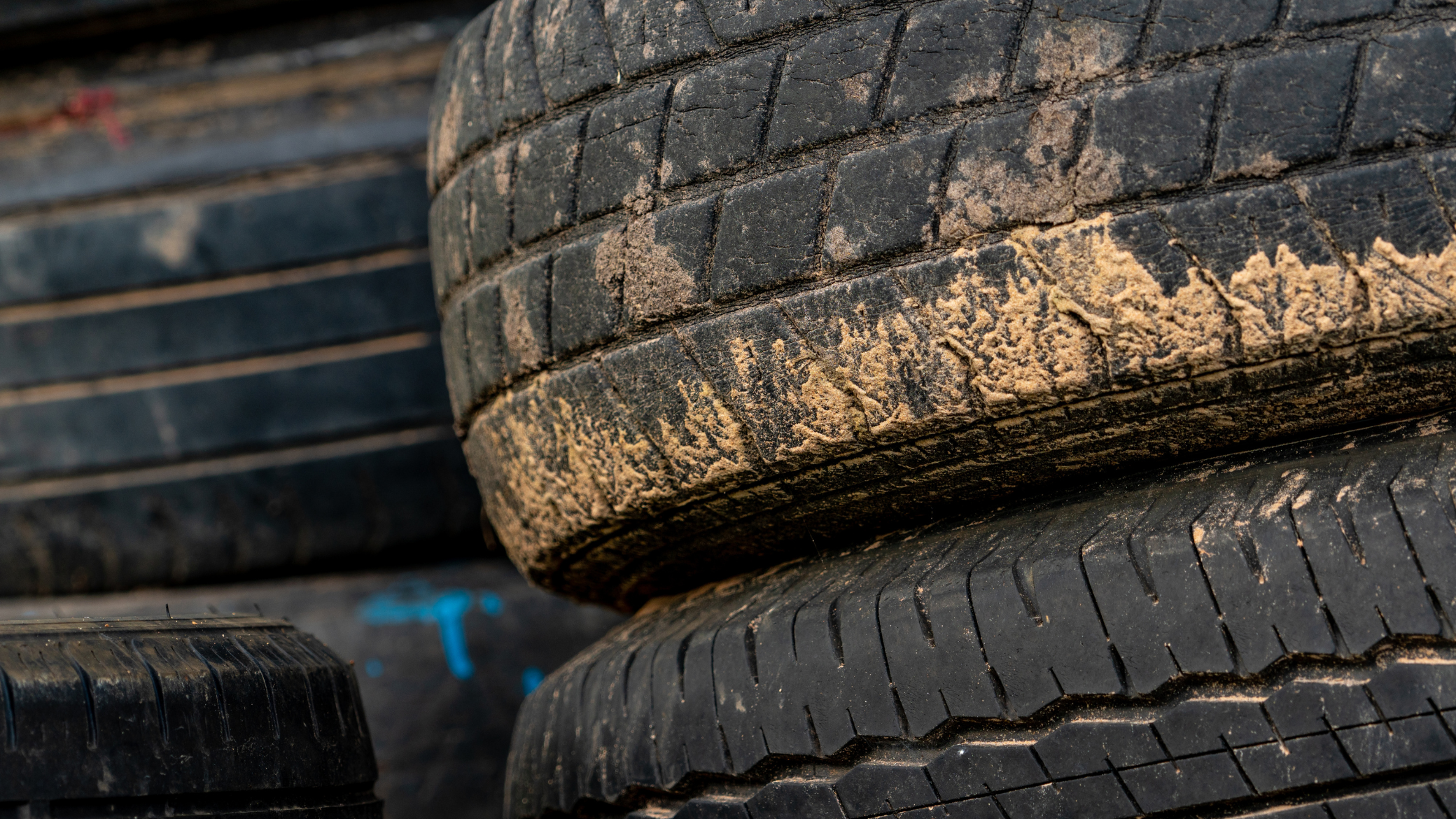
Understanding Tire Wear and Tear
The tire’s condition is critical to a vehicle’s safety and performance. Tires are the sole point of contact between the car and the road, and their integrity is paramount. Therefore, understanding tire wear and tear is crucial for maintenance and when considering the purchase of used tires. This section delves into the significance of tread depth, the indicators of tire aging, and how usage impacts tire integrity.
Tire Tread Depth and Its Importance
Tire tread depth is a vital indicator of a tire’s health and roadworthiness. The tread allows for sufficient grip on road surfaces, facilitating safe stopping and handling. In wet conditions, the tread channels water away from the tire surface to prevent hydroplaning.
According to the U.S. Department of Transportation, tires are legally worn out when they reach 2/32 of an inch of remaining tread depth. Tires have tread wear indicators, known as wear bars, built into them to monitor this. When these bars flush with the tread surface, it’s time to replace the tire.
For those purchasing used tires, measuring tread depth is essential. A tire’s tread can be measured using a tread depth gauge or the “penny test.” Insert a penny into the tire’s tread groove with Lincoln’s head upside down and facing you. If you can see all of Lincoln’s head, the tread depth is less than 2/32 inches, and the tire needs replacement.
Signs of Tire Aging
Tire aging results from a combination of factors, not just the tire’s chronological age. The rubber compounds in a tire deteriorate over time, regardless of use, due to environmental factors such as exposure to sunlight (U.V. light), extreme temperatures, and oxygen.
Tire manufacturers recommend that tires be replaced every six to ten years, regardless of tread depth, but this can vary based on conditions of use and storage. It’s essential to check the manufacture date on a tire before purchasing, which can be found on the tire sidewall as a four-digit code, with the first two digits indicating the week and the last two the year of manufacture.
Impact of Usage on Tire Integrity
The integrity of a tire can be compromised by how it is used or sometimes abused. Overloading a vehicle, driving at high speeds, sudden stops and starts, and cornering at high speeds can all accelerate tire wear. Furthermore, driving on damaged roads, exposure to chemicals and oils, and inadequate tire maintenance, such as improper inflation, can also affect tire life.
Regular rotation and balancing, as well as maintaining proper inflation, are vital in extending tire life. Improperly inflated tires can cause uneven wear, reduced fuel efficiency, and increased stress that can lead to tire failure.
When purchasing used tires, it’s critical to consider how the previous owner used them. Tires used predominantly in urban settings may have more stop-and-go wear, while those from rural locations may have more consistent wear patterns.
In conclusion, tread depth is just the beginning when considering used tires. Buyers must be vigilant about signs of aging and view the tire’s history of usage to make a safe and informed purchase.
Safety Considerations
When it comes to tire safety, the stakes are high. Tires are the critical link between the road and the vehicle, and their condition can significantly affect the protection of the vehicle’s occupants and other road users. This section explores the risks associated with worn tires, the potential for previous unseen damage, and the relevance of manufacturer recalls and notices to tire safety.
Risks Associated with Worn Tires
Worn tires are a safety hazard. As the tread wears down, the tire’s ability to grip the road diminishes, increasing stopping distances and making the vehicle more prone to skidding, especially in wet conditions. The National Highway Traffic Safety Administration (NHTSA) has indicated that poor tire conditions can significantly affect vehicle crashes.
Key risks of worn tires include:
- Hydroplaning: When water cannot be channeled away effectively, the tire can ride on a film of water and lose contact with the road.
- Blowouts: Thinner tread can increase heat build-up inside the tire, raising the risk of a blowout.
- Decreased Handling: Worn treads reduce traction, leading to poor handling and longer stopping distances.
- Punctures: Worn tires are more susceptible to holes and damage from road debris.
It is not just the tread wear that matters, but also uneven wear patterns, which can indicate alignment or suspension issues, making the vehicle unsafe to handle.
Potential for Previous Unseen Damage
Used tires may harbor damage that is not immediately visible to the untrained eye. Internal damage to the tire can occur from driving over potholes, curbs, or other objects. Such damage may weaken the tire structure, potentially leading to dangerous tire failure under stress.
Potential unseen damages include:
- Sidewall Impairments: Bulges, gouges, or cuts in the sidewall that may compromise the tire’s structure.
- Internal Damage: Impact damage can cause interior tears and separation within the tire that may not be visible from the outside.
- Bead Damage: The bead area, which seals the tire against the rim, can be damaged from improper mounting or dismounting procedures, leading to air leaks or failure to maintain the seal.
A comprehensive inspection by a tire professional can help uncover such damage, but it is only sometimes foolproof. The tire’s history of use, storage, and maintenance can provide additional clues about the likelihood of unseen damage.
Manufacturer Recalls and Notices
Manufacturers may issue recalls and service bulletins for tires with known safety issues. These recalls are essential information for anyone considering purchasing used tires because they could affect the tire’s safety. Ignoring memories can lead to continued use of potentially hazardous tires.
Recalls and notices can be issued for reasons such as:
- Defects in the Manufacturing Process: Errors during manufacturing can cause weaknesses in the tire that may lead to failure.
- Design Flaws: Some tire models may have design flaws that result in poor performance or increased wear.
- Non-compliance with Safety Standards: Tires must meet specific federal safety standards. A recall is issued if a batch of tires does not comply with these standards.
It is vital to check for any recalls on used tires by noting the Tire Identification Number (TIN) and checking it against databases maintained by the NHTSA or directly from manufacturers.
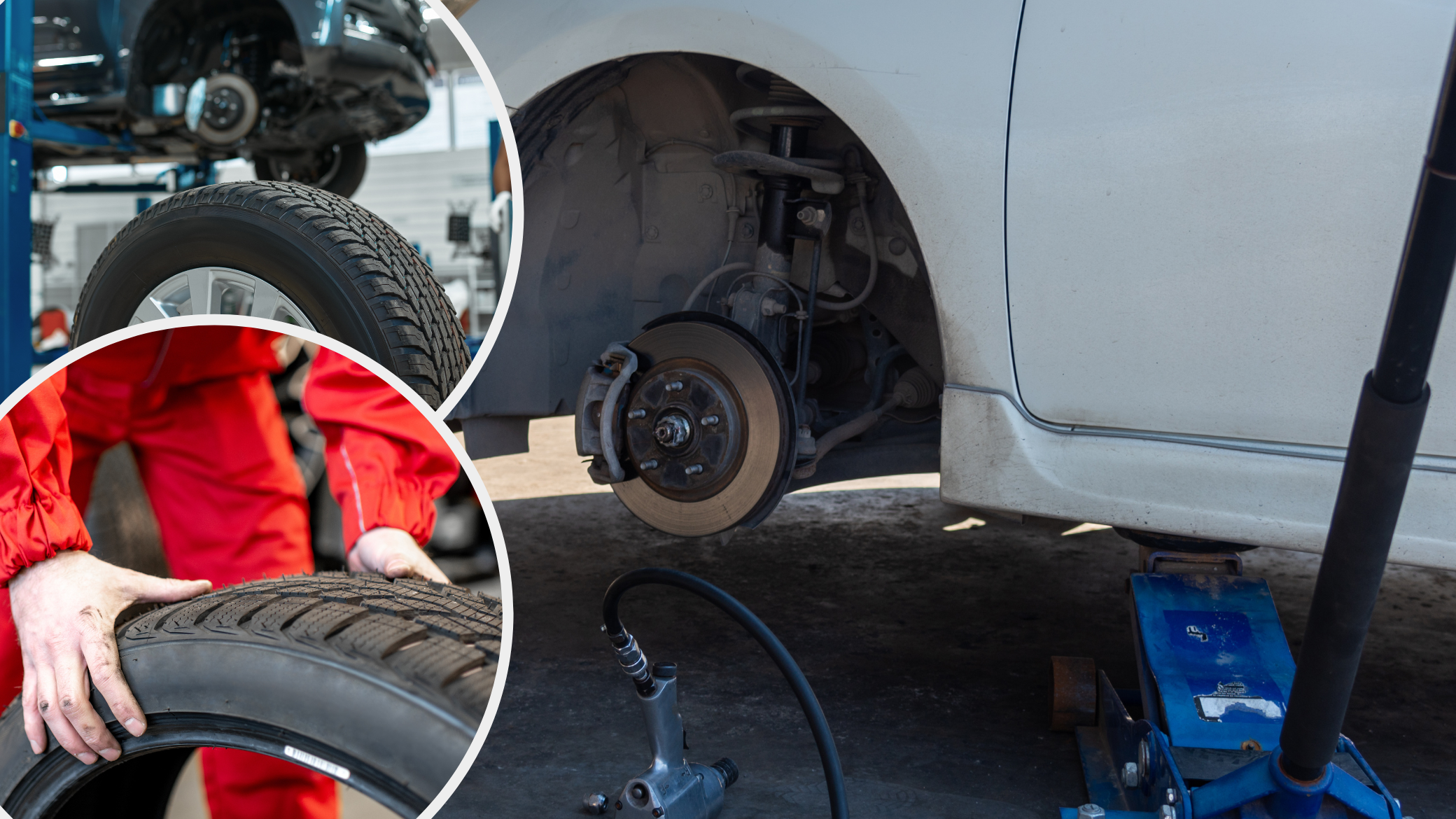
Legal and Compliance Factors
When dealing with tires, particularly used ones, knowing the legal and compliance factors governing their sale and use is crucial. These regulations are designed to ensure that all tires on the road meet minimum safety standards to protect drivers, passengers, and pedestrians. Understanding these regulations can help consumers make informed decisions and avoid legal trouble.
Regulations on Tire Tread Depths
In many jurisdictions, there are specific regulations that stipulate the minimum tread depth for tires on vehicles. The most common minimum legal limit for tire tread depth in the United States is 2/32 of an inch. This standard is set by the U.S. Department of Transportation and is enforced by state and local laws.
Here’s what you need to know about these regulations:
- Measurement Standards: The 2/32 inch minimum is typically measured in the main grooves of the tire tread.
- State Variations: While the federal standard is 2/32 inch, some states may have regulations and require a deeper tread depth for tires to be considered roadworthy.
- Enforcement: Tires can be checked during vehicle inspections, which may be mandatory in some states. If the tread depth exceeds the legal limit, the vehicle may fail the review, and the tires must be replaced.
- Liability: Driving on tires that do not meet the legal tread depth can result in fines and potentially lead to more severe consequences if bald tires contribute to an accident.
For those purchasing used tires, it is imperative to check the tread depth and ensure it exceeds the minimum legal requirement. Even if the tires are just at the legal limit at the time of purchase, they will quickly become unlawful as they wear, so it is wise to aim for a tread depth well above the minimum.
Compliance with Vehicle Safety Standards
Beyond the tires themselves, vehicle owners must also ensure that their tires comply with overall vehicle safety standards. This includes ensuring that tires are the correct size and type for the vehicle as specified by the vehicle manufacturer, as improper tires can affect the handling and stability of the car.
Critical points of compliance include:
- Size Specifications: Tires should match the dimensions the vehicle manufacturer recommends to ensure proper clearance and performance.
- Load Rating: Tires must have an adequate load rating for the vehicle. Using tires that cannot support the vehicle’s weight can lead to tire failure.
- Speed Rating: Tires also have speed ratings, indicating the maximum safe speed at which the tire can carry a load under specified conditions. Fitting tires with a lower speed rating than the manufacturer’s recommendation could limit the vehicle’s performance and safety.
- Installation: Tires must be installed and maintained according to the manufacturer’s recommendations and legal safety standards, including proper mounting and inflation.
Compliance with vehicle safety standards is not just a legal issue; it’s a matter of safety. When these standards are not met, the risk of accidents due to tire failure increases.
Consumers must recognize that legal and compliance factors are not merely bureaucratic hurdles. These regulations help ensure that every vehicle on the road is safe to operate, thus reducing the risk of tire-related incidents.
Before purchasing used tires, buyers should verify that the tires meet all applicable legal standards and the specific safety requirements of their vehicle. This approach helps to ensure that cost-saving measures do not compromise safety.
Evaluating Used Tires Before Purchase
Purchasing used tires can be cost-effective for many drivers, but it requires careful evaluation to ensure that what you’re buying is safe and suitable for your vehicle. This evaluation is not just about visual inspection but also about understanding the tires’ background and technical specifications. Below is a guide that provides a structured approach to evaluating used tires before purchasing.
Inspection Checklist for Buyers
When inspecting used tires, it is essential to have a checklist to ensure you don’t overlook any critical aspects:
- Tread Depth: Use a tread depth gauge to measure the depth of the tire treads. Ensure it is above the legal minimum of 2/32 inches and preferably more to ensure longevity.
- Wear Patterns: Check for even wear across the width of the tire. Uneven wear can indicate alignment issues with the previous vehicle, affecting tire life and safety.
- Sidewall Integrity: Examine the sidewalls for cracks, cuts, bulges, or other damage that could lead to tire failure.
- Bead Condition: Check the condition of the bead (the edge of the tire that sits on the rim). Look for signs of damage or wear that could cause the tire not to seat correctly.
- Age of the Tires: Locate the DOT code on the sidewall to determine the tire’s age. Tires older than six years should be cautiously inspected as rubber deteriorates.
- Previous Repairs: Look for patches or plugs of earlier repairs. While some repairs are acceptable, they can weaken the tire’s structure.
- Internal Damage: If possible, check for any signs of internal damage, such as exposed cords or belts, which can be dangerous.
Professional Assessments and Certifications
While a personal inspection is essential, sometimes the expertise of a professional can be invaluable:
- Professional Inspection: Have the tires inspected by an experienced tire technician who can assess the internal condition of the tires using specialized tools.
- Certification: Some tire shops sell certified used tires, which have been thoroughly inspected and deemed safe. These may come with a guarantee for a certain period or mileage.
- History Report: Ask for the tire’s history report, if available, to tell you about the tire’s past usage, including any accidents or repairs.
Understanding Tire Grading Systems
Tire grading systems can provide a standardized measure of a tire’s condition:
- Treadwear Grade: This indicates the tire’s expected wear rate. The higher the treadwear rating, the longer the tire is expected to last.
- Traction Grade: This reflects the tire’s ability to stop on wet pavement as measured under controlled conditions. It is rated from highest to lowest as A.A., A, B, and C.
- Temperature Grade: This indicates the tire’s resistance to heat when running at high speeds. Grades range from A (the highest) to C.
Understanding these grades can help you compare different used tires and make an informed choice based on your driving needs and conditions.
Evaluating used tires thoroughly before purchasing is crucial for ensuring safety on the road. A detailed inspection, whether done personally or by a professional, will help you identify any potential risks associated with the tires. It’s also beneficial to understand the tire grading systems as they can provide additional insights into the expected performance and safety of the tires. By taking these steps, you can make a more informed decision and find used tires that offer a safe and economical solution for your vehicle.
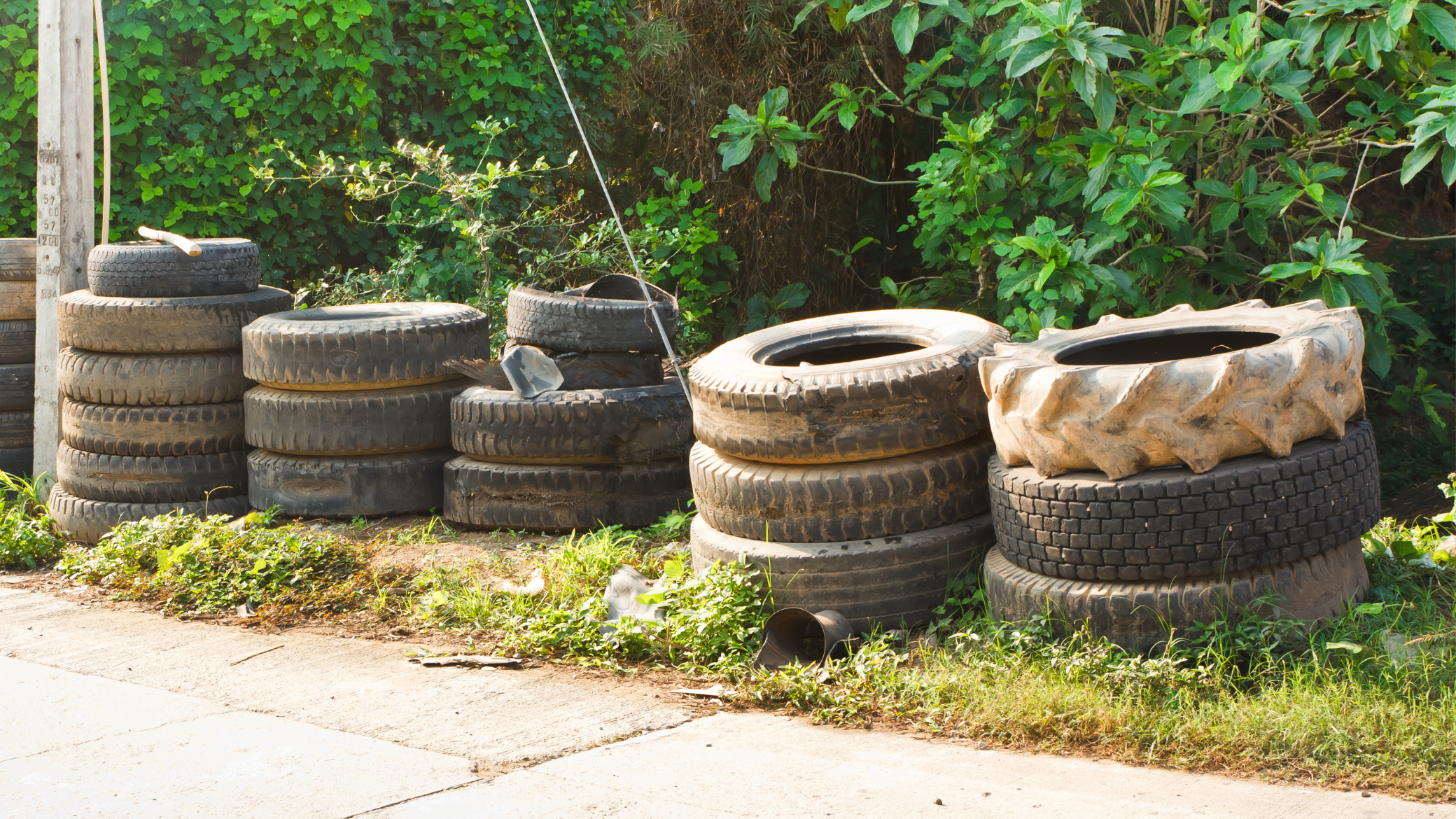
The Economic Perspective
When it comes to replacing tires, consumers are faced with purchasing new or used tires. Each option comes with its pros and cons, influenced by factors such as cost, longevity, and safety. Here’s an in-depth look at the cost-benefit analysis of buying used tires compared to new ones, the depreciation rates of tires, and the market trends that affect tire pricing.
Cost-Benefit Analysis of Buying Used vs. New Tires
The primary benefit of buying used tires is the cost savings. Used tires can be significantly cheaper than new ones, sometimes up to 50% less. This is particularly appealing for drivers on a tight budget or those who need to replace a single tire rather than a whole set. However, the lower price point of used tires must be weighed against several other factors.
- Longevity: New tires are likely to last much longer than used ones. When you buy new, you’re also purchasing the entire lifespan of the tire. With used tires, the cost per mile can be higher if they need to be replaced more frequently.
- Safety: New tires provide peace of mind when it comes to safety. They have not been subjected to unknown conditions, such as overloading or running underinflated, which can affect a tire’s integrity. Used tires may have risks, especially if their history is poorly documented.
- Performance: New tires will also have the latest technology in rubber compounds and tread design, which can offer better performance in terms of grip, fuel efficiency, and noise reduction.
- Warranty and Services: New tires often come with warranties and additional services like free rotations, balancing, and flat repairs. These added benefits are typically not available with used tire purchases.
When conducting a cost-benefit analysis, it’s crucial to consider not just the initial purchase price but the total cost of ownership, which includes factors like the potential need for earlier replacement and the lack of warranty.
Depreciation Rates of Tires
Like most products, tires depreciate over time. Several factors can influence the depreciation of tires:
- Wear and Tear: The more a tire is used, the more it wears down, directly affecting its value.
- Age: Tires age not just by wear but also by time. Rubber compounds deteriorate with age, reducing the tire’s lifespan regardless of use.
- Care and Maintenance: Well-maintained tires will depreciate slower than those that haven’t been properly inflated, balanced, or rotated.
- Brand and Type: High-quality or specialized tires, such as those designed for performance or severe weather conditions, tend to retain their value better than standard tires.
Understanding the depreciation rates of tires is essential for consumers considering used tires, as it will help them gauge the value of what they are buying against the remaining useful life of the tire.
Market Trends and Price Fluctuations
The price of tires, both new and used, is subject to market trends and fluctuations:
- Raw Material Costs: The cost of rubber and other materials can vary due to market demands, environmental policies, and geopolitical issues, affecting tire prices.
- Seasonal Demand: There can be seasonal peaks in tire sales, such as before winter in colder regions, which can drive prices up due to higher demand.
- Technological Advancements: As new tire technologies are developed, older models may decrease in price, affecting both new and used tire markets.
- Economic Factors: In times of economic downturn, consumers may opt for used tires more often, increasing demand and potentially increasing the cost of used tires.
These trends and fluctuations can affect the cost-benefit analysis of buying used versus new tires. During specific periods, the price difference between new and used tires may narrow, influencing the decision to buy new.
While the upfront cost of used tires may be attractive, a thorough cost-benefit analysis should account for safety, performance, longevity, and the total cost of ownership. Additionally, understanding the depreciation of tires and staying informed about market trends can help consumers make the most financially sound decisions when purchasing tires.
Environmental Impact
The environmental impact of tires extends from their manufacturing process to their end of life. It is a significant concern given the volume of tires produced annually worldwide and the challenges associated with tire disposal. The production and disposal of tires involve consuming natural resources and energy and potentially contributing to pollution. However, through reuse and recycling, the environmental footprint of tires can be managed more sustainably.
Eco-Friendly Aspects of Reusing Tires
Reusing tires can be environmentally beneficial in several ways:
- Conservation of Resources: Manufacturing new tires requires significant natural resources, including rubber, steel, and petroleum products. Reusing tires reduces the demand for these raw materials, which can help conserve them.
- Energy Savings: The production of new tires is energy-intensive. Reusing tires reduces the energy demand associated with the production of new ones.
- Reducing Waste: Reused Tires are diverted from landfills and other disposal facilities, which helps minimize the waste stream and the environmental issues associated with tire disposal.
- Lowering Carbon Footprint: Manufacturing tires emit CO2 and other greenhouse gases. Reusing tires can reduce the overall carbon footprint associated with the tire life cycle.
Disposal and Recycling of Old Tires
The disposal and recycling of old tires are critical in mitigating their environmental impact:
- Illegal Dumping: Tires that are illegally dumped can create not only an eyesore but also habitats for pests and a fire hazard. They can also leach harmful chemicals into the environment.
- Recycling: Recycled tires can be repurposed into various products, including asphalt for roads, playground surfaces, and even new tires. This process significantly reduces the environmental impact of tire waste.
- Energy Recovery: Tires can be used as a fuel source in various industrial processes. They have a high energy content and can be an alternative to fossil fuels.
- Reclamation: The materials from old tires, such as steel and rubber, can be reclaimed and used in new manufacturing processes.
The Lifecycle of a Tire
Understanding the lifecycle of a tire is essential for assessing its overall environmental impact:
- Production: The production stage is resource and energy-intensive, contributing to environmental pollution.
- Usage: During use, tires contribute to vehicle fuel consumption due to rolling resistance. Eco-friendly tires are designed to minimize this effect.
- Maintenance: Proper maintenance of tires can extend their life and improve fuel efficiency, reducing the overall environmental impact.
- End of Life: The future of life for a tire can be environmentally impactful. Proper disposal, recycling, or repurposing can mitigate adverse outcomes.
The environmental impact of tires is multifaceted, but the adverse effects can be mitigated through careful management and eco-friendly practices such as reusing and recycling. Reusing tires presents an opportunity to reduce resource consumption, energy use, and waste. Proper disposal and recycling are crucial for minimizing the environmental footprint of tires once they reach the end of their usable life. Understanding the entire lifecycle of a tire, from production to disposal, is essential for developing strategies to reduce the environmental impact associated with tires.
Best Practices for Buying Used Tires
Purchasing used tires can be a cost-effective alternative to buying new ones, especially for budget-conscious car owners who require a quick fix. However, the process involves careful consideration to ensure your buying is safe and worth the investment. Here are some best practices to follow when looking to purchase used tires.
Where to Buy: Vendors and Retailers
The first step in buying used tires is knowing where to shop. Several types of vendors sell used tires, and choosing the right one can affect the quality of the tires you buy.
- Certified Tire Shops: Look for tire shops that have a good reputation and are known for their high standards. Certified shops often have stringent inspection processes to ensure their used tires meet safety requirements.
- Online Marketplaces: Websites like Tires Easy Giga Tires and Tires Easy Truck can offer used tires at lower prices, but they come with greater risk due to less oversight. Always check the seller’s ratings and reviews.
- Specialized Used Tire Retailers: Some retailers specialize in used tires and often have a wide selection. They may also provide additional services like mounting and balancing.
- Auto Salvage Yards: These can be sources for used tires, especially for older or rare models. However, the condition may vary widely, so personal inspection is crucial.
- Local Classifieds and Forums: Local community boards or automotive forums can have listings for used tires, allowing you to buy directly from the previous owner.
Regardless of where you buy, always conduct a thorough inspection or have the tires checked by a professional.
Verifying the History of Used Tires
The history of a tire can tell you a lot about its condition and how much life it may have left.
- Ask for the Tire’s Age: Check the tire’s DOT code to determine its age. Tires over six years old are generally considered at the end of their service life due to aging rubber, even if they appear to have tread left.
- Inquire About Past Repairs: It’s essential to know if the tire has had any punctures or repairs. Multiple repairs, especially in the sidewall or near the edge of the tread, can compromise the tire’s integrity.
- Understand the Wear Patterns: Uneven wear can indicate issues with alignment or suspension that may have affected the tire’s structure.
- Request Documentation: If available, request any receipts or service records that might accompany the tires.
Warranty and Return Policies
While used tires rarely come with the same level of warranty as new ones, it’s still important to ask about any guarantees.
- Warranty Coverage: Some used tire retailers might offer a limited warranty that covers defects for a short period.
- Return Policy: Understand the return policy before purchasing. Some retailers may offer a grace period during which you can return the tires if they don’t meet your expectations.
- Exchange Options: Inquire if there is an option to exchange the tires for another set if they don’t fit or meet your standards once installed.
Following these best practices can significantly increase the chances of making a satisfactory purchase when buying used tires. It’s about balancing cost savings with safety and performance. Always prioritize tire condition and security over the price to ensure that your used tire purchase is wise.
Installation and Maintenance
Once you have decided to purchase used tires, ensuring they are installed correctly and maintained is essential for your safety and to get the most out of your investment. Proper installation and regular maintenance can extend the life of the tires and prevent potential accidents or issues down the road.
Professional Installation vs. DIY
The decision between professional installation and doing it yourself depends on several factors, including your level of expertise, the tools at your disposal, and the value you place on peace of mind.
Professional Installation: Most experts recommend professional installation for several reasons:
| Safety: Professionals have the experience and know how to install tires safely. |
| Equipment: They have the right tools and machines to mount and balance tires correctly. |
| Balance: Properly balanced tires are critical to vehicle safety and lifespan; professionals can ensure this is done accurately. |
| Disposal: They can usually dispose of your old tires in an environmentally friendly manner. |
| DIY: While only recommended if you have experience, installing tires can save money. If you choose this route: |
| Equip Yourself: Ensure you have the necessary tools, including jacks, tire irons, and a torque wrench. |
| Follow Guidelines: Adhere strictly to the vehicle and tire manufacturers’ guidelines. |
| Balancing: Only attempt to balance tires yourself if you have the correct machinery and know how to use it. |
Maintaining Used Tires for Optimal Performance
Once your tires are installed, proper maintenance is critical to ensuring they perform well and last as long as possible.
- Regular Inspections: Check your tires regularly for signs of wear and tear, cracks, or embedded objects.
- Air Pressure: Keep tires inflated to the manufacturer’s recommended pressure. This not only ensures optimal performance but also affects fuel economy.
- Rotation: Rotate your tires every 5,000 to 8,000 miles to ensure even wear.
- Alignment: Check your vehicle’s wheel alignment regularly, as misalignment can cause uneven and premature tire wear.
- Driving Habits: Drive responsibly, as aggressive driving can accelerate tire wear.
When to Replace Your Used Tires
Knowing when to replace your tires is just as important as maintaining them.
- Tread Depth: The minimum legal tread depth in most states is 2/32 of an inch. Use a tread depth gauge or the penny test to determine if your tires are within this limit.
- Visible Damage: If you see bulges, significant cuts, or irregular wear, it’s time to replace the tire.
- Age: Remember, the age of a tire can affect its performance, not just the tread wear. Even if the tread looks sufficient, aging tires can become unsafe.
- Vibration or Noise: If you notice unusual vibrations or noise while driving, check your tires, as it may be a sign of internal damage.
Regular maintenance, including keeping them properly inflated, rotating them, and checking alignments, will ensure your used tires perform safely and effectively. Be vigilant for signs that your tires need replacing, and when the time comes, do not delay in doing so to maintain the safety and performance of your vehicle.
Case Studies and Consumer Experiences
Purchasing used tires is common among vehicle owners seeking to save money or reduce environmental impact. Various case studies and consumer experiences highlight the benefits and potential risks of this choice. Here, we explore some of these stories, illustrating positive outcomes, cautionary tales, and the valuable lessons they impart.
Success Stories: The Positive Outcomes
There are many instances where consumers have benefited significantly from purchasing used tires.
- Cost Savings: One of the most cited positive outcomes is the considerable cost savings. Consumers report saving up to 50% off the price of new tires without compromising safety or performance.
- Resourceful for Emergencies: Several consumers have found that used tires can be a quick and effective solution for unexpected tire failures, especially when new tire purchases are not immediately feasible due to cost or availability.
- Supporting Local Businesses: Purchasers of used tires often buy from local shops or recycling centers, supporting community businesses and the circular economy.
Case Study Highlight
A consumer needed two tires replaced due to a blowout but could not afford new tires. They purchased used tires with nearly complete tread from a reputable tire shop, which included a 30-day warranty. The tires lasted over two years, providing the consumer ample time to save for new tires.
Cautionary Tales: What Can Go Wrong
However, not all experiences with used tires are positive, and some stories serve as warnings to potential buyers.
- Safety Incidents: Some consumers have encountered safety issues, such as blowouts or loss of traction, due to the purchase of tires with unseen internal damage or excessive wear.
- Hidden Costs: There are tales of buyers who ended up paying more in the long run due to the need for frequent replacements or damage caused to their vehicle by poor-quality used tires.
- Legal and Compliance Issues: Individuals have faced legal problems using tires that do not meet the legal tread depth requirements, resulting in fines and points on their driver’s license.
Case Study Highlight
A case involved a consumer who bought used tires without thorough inspection, resulting in a blowout that caused a minor accident. Upon expert examination afterward, the tires were found to have dry rot that was not visible during the initial inspection.
Lessons Learned and Best Practices Consolidated
From cheerful and negative experiences, consumers and industry experts have consolidated a list of best practices for buying used tires.
- Inspection: Always conduct or arrange for a thorough tire inspection, focusing on tread depth, signs of repair, and checking for dry rot or sidewall damage.
- History: Where possible, get the history of the tire, including its age and any past repairs.
- Buy from Reputable Sources: Purchase used tires from reputable dealers with a warranty or at least some after-sale support.
- Installation: Have the tires installed by professionals and ensure they are correctly balanced.
- Maintenance: Keep up with regular tire maintenance, including pressure checks and rotations.
Lessons Consolidated
From the range of experiences, the overarching lesson is that while used tires can be a viable option, they require due diligence on the buyer’s part. Cost should not be the only factor when considering used tires; safety and quality are paramount. By adhering to best practices and learning from the experiences of others, consumers can make informed decisions that provide them with the benefits of used tires while minimizing potential risks.
Conclusion & Recommendations
When it comes to purchasing used tires, safety should always be the foremost concern. While used tires can often provide a cost-effective alternative to new tires, they must be selected and installed carefully to ensure they offer the safety and reliability drivers need.
The viability of used tires is not questioned, but their condition upon purchase makes all the difference. With diligent inspection and maintenance, used tires can be a smart choice for many consumers, offering the twin benefits of cost savings and environmental sustainability.
Recommendations for Tire Buyers
For those considering the purchase of used tires, the following recommendations are key:
- Prioritize Quality Over Price: Don’t let a low price tag be the only deciding factor. Quality and safety are more critical for long-term satisfaction and safety.
- Thorough Inspection: Always insist on a detailed inspection or have one conducted by a trusted professional before purchase.
- Understand Tire Age: Remember that the age of a tire can impact its safety, even if the tread appears barely worn.
- Reputable Sellers: Buy from reputable sources that offer a warranty or guarantee.
- Regular Maintenance: Once installed, maintain your tires diligently, with regular checks on air pressure, alignment, and tread wear.
Future Outlook for the Used Tire Market
The future of the used tire market looks promising, with trends showing a growing consumer awareness about the benefits of recycling and reusing. With advancements in inspection and refurbishing technologies, the demand for used tires is expected to expand, offering consumers more reliable and safer options. Additionally, regulations and industry standards are becoming more stringent, improving the quality of used tires available to buyers.
What Tires Easy Offers
Understanding the complexities of buying used tires, it is crucial to turn to a trusted source prioritizing quality and customer satisfaction. Tires Easy offers a seamless and secure tire-buying experience for those ready to make an informed tire purchase.
Whether you are looking for new or high-quality used tires, Tires Easy is committed to providing a wide selection to meet your specific needs, all backed by our customer satisfaction guarantee. We understand that the right tire can make all the difference in your driving experience, which is why our experts are here to help you every step of the way.
FAQs
What are the disadvantages of secondhand tires?
Secondhand tires may come with hidden damages like internal wear or dry rot that aren’t immediately visible, potentially leading to safety issues. The usage history is often unknown, possibly resulting in a shorter lifespan and compromised performance compared to new tires.
How do you know if used tires are good?
Inspect used tires for even tread wear, ensure they have more than 4/32 of an inch of tread depth, check for signs of repair, punctures, or sidewall damage, and verify they are not older than six years, which you can ascertain from the DOT code on the sidewall.
Is it OK to use cheap tires?
Using cheap tires can be a budget-friendly option, but ensuring they meet safety standards is crucial. Inferior tires may wear out faster and offer less grip, affecting driving performance, especially in adverse weather conditions.
How much tread is good on a used tire?
A used tire should have at least 4/32 inches of tread depth for adequate safety and performance. Tires below this threshold will have reduced traction, especially in wet conditions, and are closer to needing replacement.
Is it safe to buy secondhand tires?
Buying secondhand tires can be safe if they have been thoroughly inspected and still meet safety standards. It’s essential to buy from reputable sources and to check for adequate tread depth and no signs of severe wear, damage, or aging.
How can I reuse old tires?
Old tires can be repurposed into garden planters, playground equipment, and outdoor furniture or used in DIY projects for creative decoration or practical uses like making tire swings or obstacle courses.
Are new tires better than used ones?
New tires typically offer the latest technology in tread design and rubber compounds, providing optimal performance, longevity, and safety. They come with a total lifespan ahead of them and a manufacturer’s warranty, which used tires rarely include.
What are tires used for?
Tires provide a cushioned ride, traction, and handling for vehicles, allowing them to move efficiently on various terrains. They are the sole point of contact between the car and the road, playing a critical role in safety and performance.
-
Writer




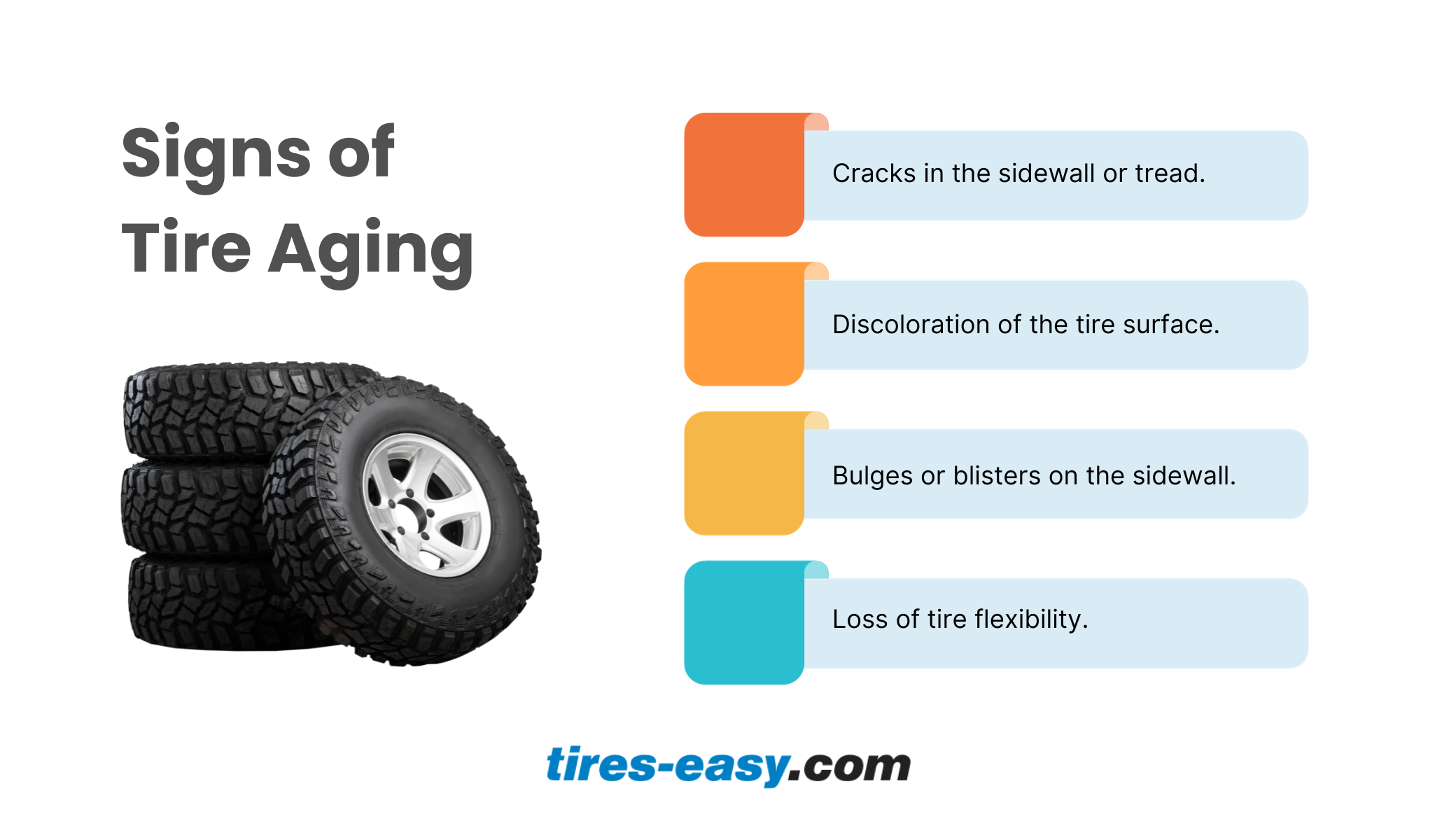
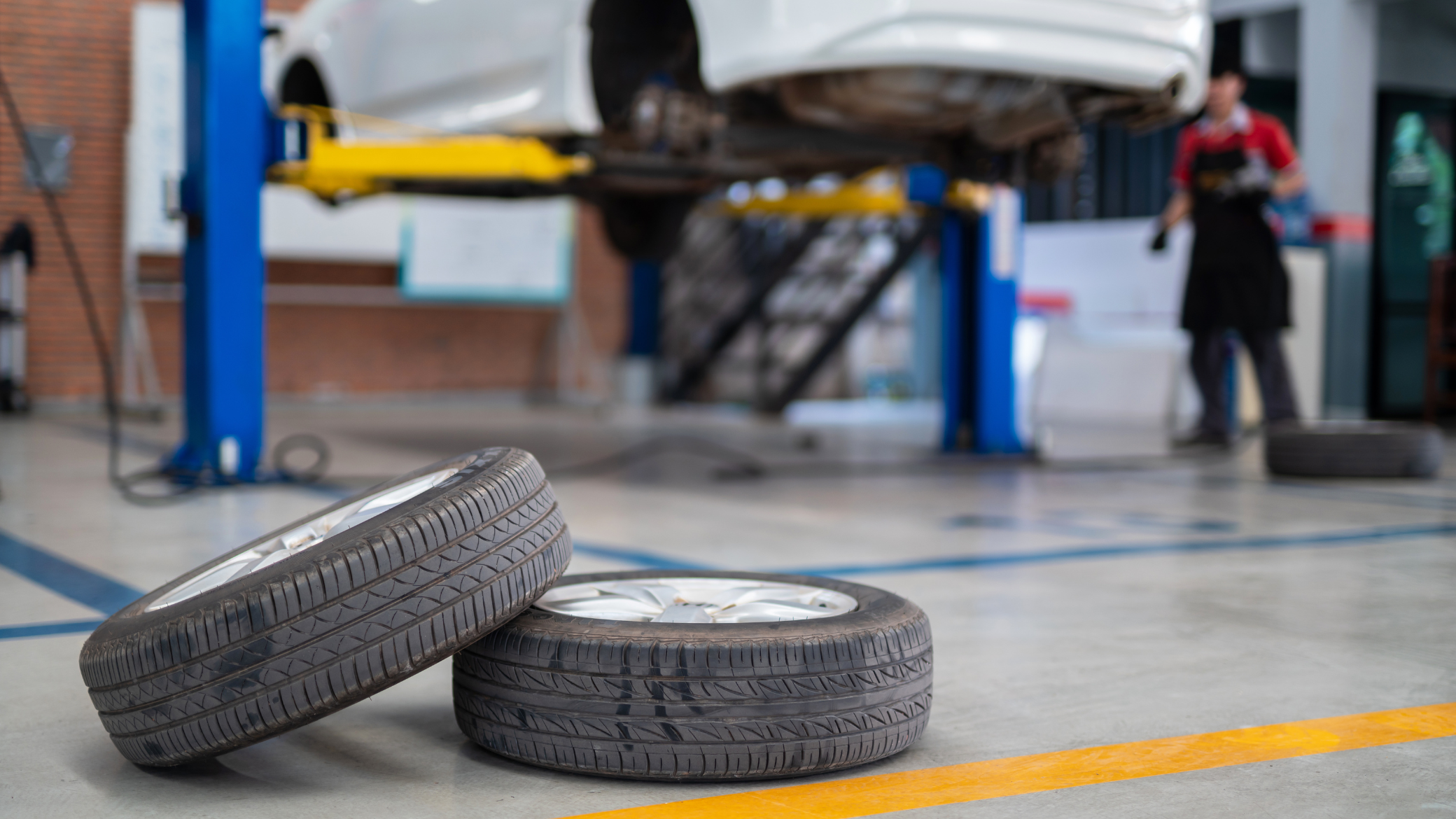
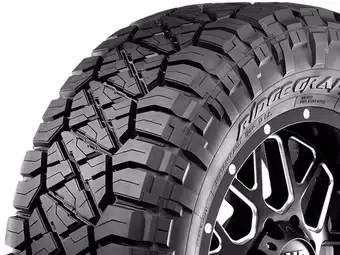


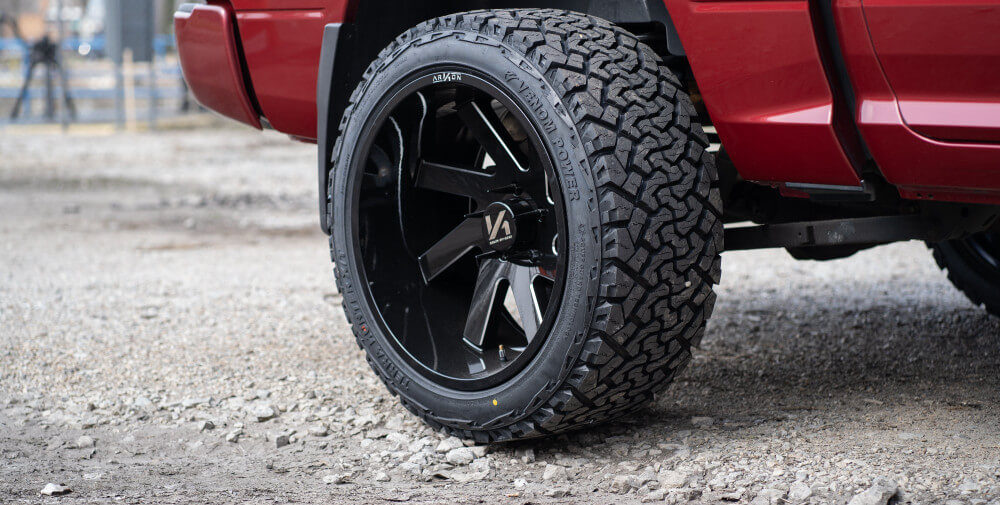


 English
English Français
Français Español
Español